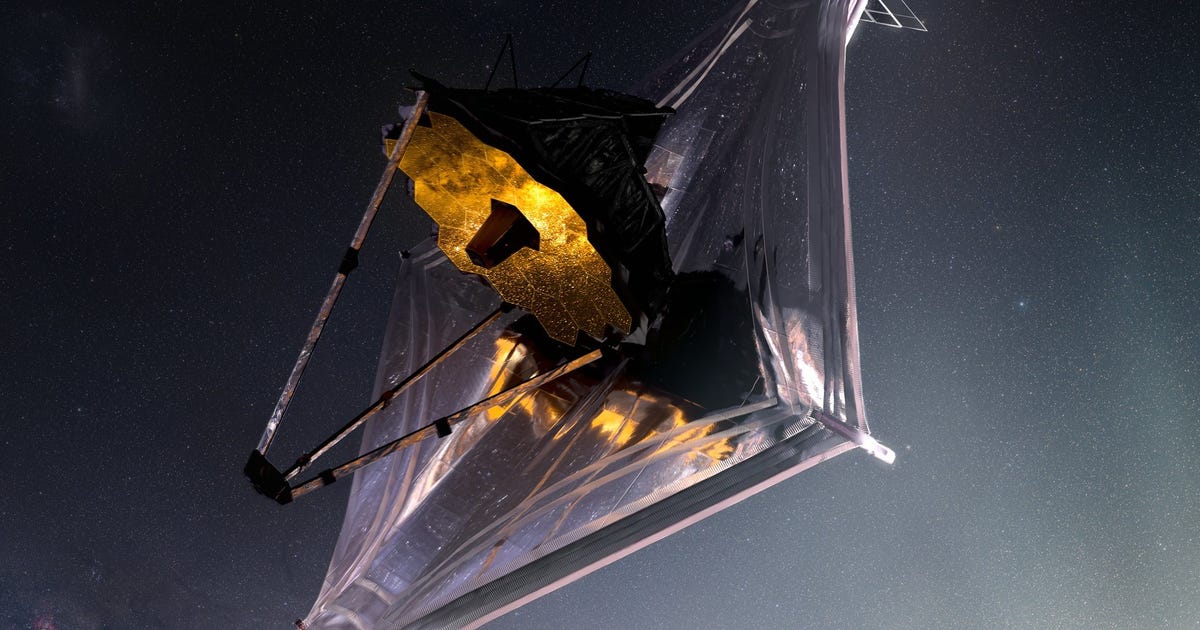
'Space Treasure': Webb Snaps Its First-Ever Direct Image of an Exoplanet
Hello, HIP 65426 b! That jumble of letters and numbers belongs to an exoplanet (a planet outside our solar system) that has the honor of being the subject of the James Webb Space Telescope's first direct image of a distant world.
"This is a transformative moment, not only for Webb but also for astronomy generally," said astronomer Sasha Hinkley of the University of Exeter. Hinkley led an international team of researchers who worked on the landmark exoplanet observation.
Before we lose our minds over this, a couple of caveats. Exoplanets have been directly imaged before by other telescopes, and the research highlighted in NASA's Thursday announcement hasn't yet been through the peer-review process, where other scientists scrutinize the information. OK, now you can shout, "Cool!"
This graphic shows star HIP 65426 at the top with the inset images showing exoplanet HIP 65426 b in different bands of infrared light, as seen by the James Webb Space Telescope.
NASA/ESA/CSA, A Carter (UCSC), the ERS 1386 team, and A. Pagan (STScI)JWST sees in infrared, which gives it the ability to peer far and deep into the universe and spot elusive objects that other telescopes wouldn't be able to capture. The image release highlights how HIP 65426 b looks in four different bands of infrared light.
"Obtaining this image felt like digging for space treasure," said postdoctoral researcher Aarynn Carter of the University of California, Santa Cruz. Carter led the image analysis. Webb is able to mask starlight in order to block out a star's glare and capture images like this of elusive exoplanets. It helps that HIP 65426 b orbits its host star at a distance 100 times farther than the Earth from the sun, making it a little easier to mask the light.
You'll notice a tiny white star in each of the four planet images. That marks the location of the host star, which has been hidden from view.
The planet was already known to exist, thanks to the work of a telescope in Chile that discovered it in 2017. "Webb's view, at longer infrared wavelengths, reveals new details that ground-based telescopes would not be able to detect because of the intrinsic infrared glow of Earth's atmosphere," said NASA.
The exoplanet is a youngster, just 15 million to 20 million years old. Here on Earth, we're living on a 4.5-billion-year-old planet. HIP 65426 b is a gas giant, measuring in at six to 12 times the mass of Jupiter. The researchers should be able to dial in its mass more accurately as they work through the data.
The team is in process on a research paper that'll head through the peer-review process of a journal before publication. The early results, however, are already worth celebrating.
Webb, which launched in late 2021 and went through a lengthy deployment process, has already provided a diverse bouquet of images and observations, ranging from glorious nebulas to spotting carbon dioxide in an exoplanet's atmosphere. The views of HIP 65426 b might look like glowing blobs, but they're just the beginning, a harbinger of the knockout science to come.
Source
